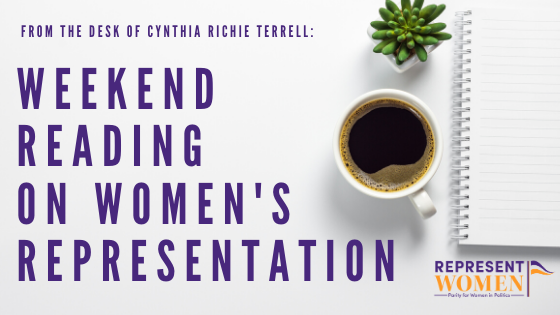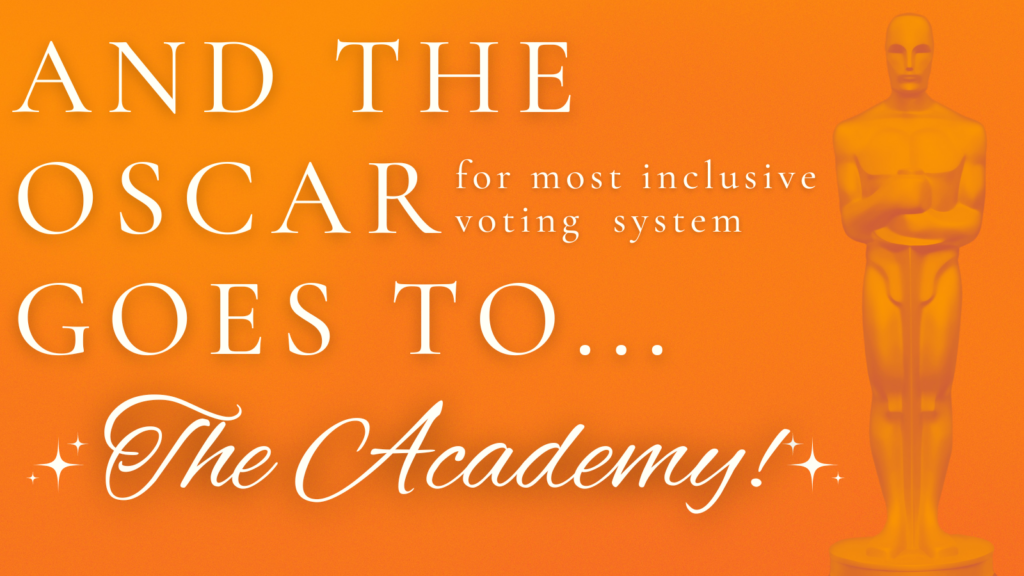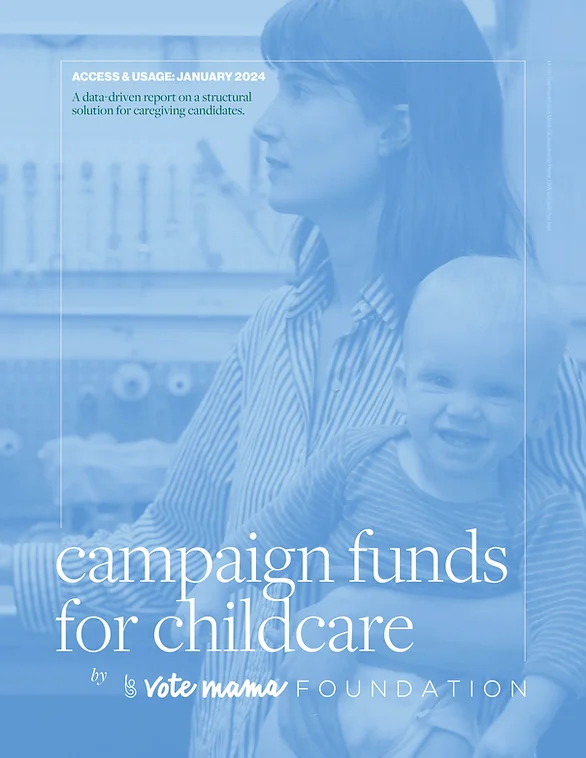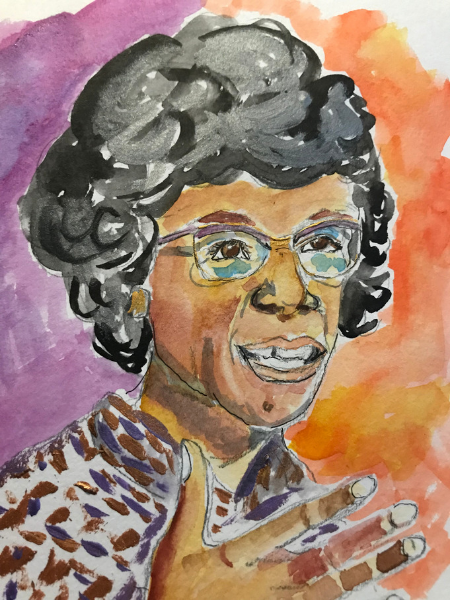
Weekend Reading on Women’s Representation is a compilation of stories about women’s representation in politics, on boards, in sports and entertainment, in judicial offices and in the private sector in the U.S. and around the world—with a little gardening and goodwill mixed in for refreshment!
This past Tuesday was Ranked-Choice Voting Day. Ranked-choice voting enhances representation and encourages candidates to appeal to a broader spectrum of voters. As we commemorate this day, let’s reflect on the positive impact of this innovative voting method on fostering fair and inclusive elections.
This week, celebrate representative democracies and read about the Republican primaries, RCV and communities of color, new research on barriers mothers face when running for office, and the surprisingly inclusive voting systems used by the Oscars.
New Hampshire Primary: Nikki Haley Vows to Stay in the Race

An article by Mel Leonar Barclay covers Nikki Haley’s campaign strategy and her efforts to address questions about her “electability” as a woman.
This week, New Hampshire’s Republican primary was held, with former President Donald Trump winning. Despite facing challenges in a party largely supportive of Trump, Nikki Haley aims to stay in the race and build a coalition with independents and Republicans seeking an alternative candidate. Haley’s strategy involves positioning herself as the last candidate who can take down Trump and the only Republican who can defeat Biden.
Using ranked-choice voting for presidential races would allow multiple candidates from both parties and even third parties to run a successful campaign. It even offers the potential for alliances and coalition building among candidates in the same race.
Haley’s supporters in New Hampshire offer a glimpse into the impact of her strategy as the Republican woman who has come closest to the presidency in the modern GOP and insight into a segment of women voters who are looking for alternatives to the parties’ standard-bearers.
Outside Haley’s Manchester rally on Friday, Lynn Jackson, an independent, said she sees Trump as “dangerous” to the country’s democracy and is shopping for alternatives. Jackson, 62, said she attended a DeSantis event the previous day but was “really bothered” by how he touted that he didn’t follow federal guidance on COVID-19 restrictions in Florida. Jackson said she hadn’t decided on a candidate but that Haley “seemed less extremist than I expected her to be.”…
Women candidates have long faced questions about whether they’re electable, with even supporters sometimes questioning whether other voters will find putting a woman in office palatable. Eighty percent of Americans think that one obstacle to boosting representation is that many voters aren’t ready to elect a woman to higher office, according to 2023 polling from Pew Research Center.
Oscars Embrace Ranked-Choice Voting: A ‘Gold Standard’ for Diversity in Award Nominations and Elections

Ranked-Choice Voting Day was celebrated this week on the same day as the release of the Oscar nominations. An article by Yates Wilburn and Will Mantell of FairVote discusses ranked-choice voting (RCV) in the Academy Awards, highlighting its application in the nomination process and the selection of winners. The Oscars use a multi-winner, proportional form of RCV to ensure that nominees represent the various preferences of voters.
RepresentWomen’s research has proven that ranked-choice voting helps women and underrepresented groups run for office and win. An example of this is last year’s Best Actress winner, Michelle Yeoh, who was the first Asian woman to take home the award.
Why is multi-winner, proportional RCV the gold standard? It ensures that winners (or, in this case, nominees) are chosen in proportion to the share of votes cast and that nearly all voters will help elect a candidate or nominee they support. In other words, proportional RCV is how to make a representative body truly, well… representative.
Look at the diversity of recent Oscar nominees compared to other awards shows. Among last year’s Best Picture nominees alone, it’s hard to see the same voters nominating both the mass-appeal smash hit Top Gun: Maverick and the film festival darling Everything Everywhere All At Once. Same with Avatar: The Way of Water with its nearly half-billion dollar budget, and Triangle of Sadness with its $15 million budget.
But that’s exactly the point. The nominees represent voters who like action movies, voters who like sci-fi movies about the multiverse, and voters who like social commentary. They don’t just represent whatever group happens to be in the majority, to the exclusion of sizable minorities that should have their voices heard.
New Report on Campaign Funds and Childcare From Vote Mama

One of our terrific allies, Vote Mama, released a report titled ”Campaign Funds for Child Care.” Childcare costs for candidates, particularly for women, can deter them from running for office. The report finds a significant increase in the use of campaign funds for childcare (CFCC) from 2018 to 2022 at federal, state and local levels. This rise is particularly notable among candidates from underrepresented groups, proving CFCC to be a crucial resource for women and people of color.
The cost of childcare impacts how and when caregivers are able to run for office, and for some, it may shut them out of our political system entirely. Research shows that women are less likely to run for office if they have young children. It is no wonder that just 6.8% of federal legislators and 5.3% of state legislators are moms with minor children. The cost and accessibility of caregiving creates structural, financial, and logistical barriers to running for office…
Overwhelmingly, this report indicates that CFCC is vital for accessibility and equity and that CFCC is a structural solution that increases the diversity of candidates and elected officials…
This data shows that when candidates are authorized to use their campaign funds on caregiving expenses—they do. CFCC usage rose exponentially from 2018 to 2022 at the federal, state, and local levels, especially among candidates from underrepresented groups. CFCC has proven to be a vital resource for women and people of color, and it presents an opportunity for both Democrats and Republicans to increase the diversity of their candidates.
FairVote Report Highlights Positive Impact of Ranked-Choice Voting on Communities of Color

Last week, our partners at FairVote released a report on ranked-choice voting and communities of color. Authored by Deb Otis and Sabrina Laverty, the report examines the positive outcomes for communities of color in ranked-choice voting (RCV) elections based on data from 448 RCV contests.
Our memo, Ranked-Choice Voting and Women’s Representation echoes the conclusion of this report and finds that RCV has a positive impact on women of color.
Here’s an excerpt from the executive summary of FairVote’s new report:
Candidates of color continue to benefit from the RCV counting process.
… White candidates increase their vote share between their first and final rounds by 12%. Candidates of other racial or ethnic backgrounds see larger increases – led by Black candidates with a 15% increase.
Candidates of color pay no penalty when they run against other candidates of the same race or ethnicity.
…The median Black candidate earned 6% more votes than expected when other Black candidates were eliminated, suggesting a favorable transfer of support within their own community. The median Hispanic or Latino candidates earned 12% more transfer ballots than expected. The median Asian American or Pacific Islander candidate earned 33% more transfer ballots than expected, again indicating a positive in-group flow of support.
Voters of color continue to demonstrate the tendency to rank more candidates than White voters. In a case study of the 2022 Oakland mayoral race, Black and Hispanic or Latino voters ranked more candidates than White voters on average. This builds on previous findings that voters of color rank candidates at high rates.
Naturalized citizens and permanent residents support ranked-choice voting and proportional representation.
In May 2023, we launched a digital survey for this population, and over half of respondents identified as people of color. 81% said they would support using ranked-choice voting in their area. The groups with the highest support for ranked-choice voting were Black respondents and Hispanic or Latino respondents.
Ranked-Choice Voting and Representation in Media: Lily Gladstone’s First Oscar Nomination

Antonia Blyth’s article for Deadline covers a new first within the Oscars. Killers of the Flower Moon actress Lily Gladstone made history this past Tuesday when she became the first Native American to receive an Oscar nomination. Gladstone’s nomination and the excitement surrounding it are marks of progress for the Academy. Gladstone expressed her honor but questioned why it took so long for a Native American actress to be nominated. With her new platform, Lily Gladstone hopes to bring more Native stories to light.
This milestone was reached in part because of the voting system that the Academy uses. RepresentWomen’s research on ranked-choice voting (RCV) consistently shows that RCV helps women, particularly women of color, get elected (or nominated).
Gladstone said she was “so honored”. But she also wondered about the fact that no Native American actresses have been nominated before now. “Why am I the first?” she said. “Why did it have to take this long for me to be the first Indigenous North American? Most of the films that show up in these categories are shot on Indigenous land in North America, and it’s taken this long.”
With the recent Golden Globes win that made her the first Indigenous recipient of Best Actress, Gladstone hopes her achievements will be “inspiring to other young Native actresses out there who are excited about just the moment of having this film out, and of having the Globes go the way that they did.”…
Given her platform, Gladstone intends to dig into more previously-untold Native American stories. “There are a lot of Native women at different points in history that have been groundbreaking for whatever fields that they’ve been in, but have gone uncelebrated, or just basically unknown,” she said. “There’s definitely some biographies that need to be out there, because young Native women need to know that it’s been Native women who have shaped whatever field they’re in: music; science; law. There are just a ton of stories, and whether it’s me embodying these or me lending my name and some of my thoughts, even if it’s just notes and encouragement to help lift these stories, that’s honestly, I feel like the greatest gift of all of this.”
Weigh In on Woman Directors

This week’s Oscar nominations sparked outrage as both Margot Robbie and Greta Gerwig, powerhouses behind the critically acclaimed “Barbie,” were absent from the Best Director and Best Actress categories. This disappointment is rooted in a familiar pattern of underrepresentation of women in the Academy Awards, particularly in directorial roles. While the Oscars have been more diverse this year, there is still work to do to achieve gender balance. Justine Triet is only the 8th woman to be nominated for Best Director in Oscar history. The Oscars used gendered categories for acting, so why not use gendered categories for directing? While the quest for inclusion within existing categories must continue, the question arises: can a dedicated “Best Women’s Director” category truly address this systemic imbalance? Let us know who you think should get an Oscar by ranking these women directors here!
Last week’s staff convening wasn’t just productive, it was electrifying. As we crisscrossed the DMV, delving into the vibrant scene of DC’s landmarks, a profound sense of purpose was reinforced. As we continued our trek to stop at the National Women’s Party building, I realized that this wasn’t just another stop on our itinerary; it was a pilgrimage to the very source of RepresentWomen’s mission, and it was a formidable reminder of why we do what we do. Standing here was a testament to RepresentWomen’s enduring power of collective purpose fueled by our unwavering diversity and dedication to continue to do our great work.

Shirley Chisholm’s Legacy on Black Women in Politics
As we continue to seek representation in all areas, we honor a woman who decided to “bring a folding chair” to the table where she was not given a seat. Shirley Chisholm declared her candidacy for president of the United States on January 25, 1972, making her the first woman and African American to seek nomination for the office.
Since 1972, we’ve seen an African American president and the first female vice president. We have even seen progress on the Supreme Court. It is time for more change. We salute Madame Chisholm, not just for claiming her rightful seat but for teaching us to bring our own when none are offered. She showed us progress is not a gift but a right. Shirley Chisholm’s legacy propels us to keep striving and to keep making room.

Up next:
U.S. democracy is at a dangerous inflection point—from the demise of abortion rights, to a lack of pay equity and parental leave, to skyrocketing maternal mortality, and attacks on trans health. Left unchecked, these crises will lead to wider gaps in political participation and representation. For 50 years, Ms. has been forging feminist journalism—reporting, rebelling and truth-telling from the front-lines, championing the Equal Rights Amendment, and centering the stories of those most impacted. With all that’s at stake for equality, we are redoubling our commitment for the next 50 years. In turn, we need your help, Support Ms. today with a donation—any amount that is meaningful to you. For as little as $5 each month, you’ll receive the print magazine along with our e-newsletters, action alerts, and invitations to Ms. Studios events and podcasts. We are grateful for your loyalty and ferocity.





